Tom's Hardware Verdict
Although it’s a pricey drive, Corsair’s MP600 Pro is fast, secure, and keeps its cool with innovative cooling solutions.
Pros
- +
+ Competitive performance
- +
+ Innovative and functional thermal solutions
- +
+ AES 256-bit encryption
- +
+ 5-year warranty
Cons
- -
Less endurance than the non-Pro model
- -
Smaller-than-expected SLC cache
- -
Slow-to-recover SLC cache
- -
Dated software support
- -
Costly
Why you can trust Tom's Hardware
Powered by Phison’s new PCIe Gen4 NVMe SSD controller and Micron’s 96-Layer TLC flash, Corsair’s all-new MP600 Pro is the company’s fastest M.2 NVMe SSD yet. With sequential read/write throughput that stretches up to a blistering 7.1 / 6.5 GBps, the MP600 Pro offers nearly bus-saturating performance and looks brilliant with innovative custom heatsinks, making it a sure contender for our list of Best SSDs. Though the drive is pricey, Corsair offers not only a standard drive cooled with a heatsink but also a Hydro X Edition with a water block for those who want a truly water-cooled M.2 SSD.
Historically, Corsair’s SSDs have a solid design and rank well in both performance and value. Until now, the MP600 served as the company’s top dog, sporting a sleek design, AES 256-bit encryption, and packing top speeds of up to 5 / 4.4 GBps of sequential read/write throughput.
Now, over a year later and just in time for Intel’s Rocket Lake launch, the company has upgraded to faster hardware to create a Pro model for those who want even more speed. Corsair’s MP600 Pro improves upon its predecessor, trading out the Phison E16 controller for the new E18 and interfacing with a faster flash with a 1,200 MTps transfer rate. Those enhancements yield up to 660,000 / 800,000 random read/write IOPS.
Unlike Team Group’s form-over-function attempt at water-cooling an SSD, Corsair’s MP600 Pro Hydro X Edition is the first truly water-cooled M.2 NVMe SSD we’ve seen. With both a heatsink edition and the Hydro X Edition for integrating into your custom watercooled PC, both of the sleek and innovative designs ensure cool operation.
Specifications
| Product | Force MP600 Pro 1TB | Force MP600 Pro 2TB | Force MP600 Pro Hydro X 2TB |
|---|---|---|---|
| Pricing | $224.99 | $434.99 | $459.99 |
| Capacity (User / Raw) | 1000GB / 1024GB | 2000GB / 2048GB | 2000GB / 2048GB |
| Form Factor | M.2 2280 | M.2 2280 | M.2 2280 |
| Interface / Protocol | PCIe 4.0 x4 / NVMe 1.4 | PCIe 4.0 x4 / NVMe 1.4 | PCIe 4.0 x4 / NVMe 1.4 |
| Controller | Phison PS5018-E18 | Phison PS5018-E18 | Phison PS5018-E18 |
| DRAM | DDR4 | DDR4 | DDR4 |
| Memory | Micron 96L TLC | Micron 96L TLC | Micron 96L TLC |
| Sequential Read | 7,000 MBps | 7,000 MBps | 7,000 MBps |
| Sequential Write | 5,500 MBps | 6,550 MBps | 6,550 MBps |
| Random Read | 360,000 IOPS | 660,000 IOPS | 660,000 IOPS |
| Random Write | 780,000 IOPS | 800,000 IOPS | 800,000 IOPS |
| Security | AES 256-bit encryption | AES 256-bit encryption | AES 256-bit encryption |
| Endurance (TBW) | 700 TB | 1,400 TB | 1,400 TB |
| Part Number | CSSD-F1000GBMP600PRO | CSSD-F2000GBMP600PRO | CSSD-F2000GBMP600PROHXE |
| Warranty | 5-Years | 5-Years | 5-Years |
The MP600 Pro is available in capacities of 1TB and 2TB for $225 and $435, respectively. The Hydro X Edition only comes in a 2TB capacity with a slightly higher price tag of $460. Corsair rates the MP600 Pro to deliver speeds of up to 7,000 / 6,550 MBps in sequential read/write transfers and up to 660,000 / 800,000 random read/write IOPS under heavy load.
Corsair didn’t improve the MP600 Pro’s endurance ratings, though. In fact, instead of improving, the Pro has slightly lower endurance than the MP600. Corsair’s MP600 Pro comes backed by a five-year warranty and is rated to endure up to 700TB of written data per 1TB of drive capacity, while the original MP600 carries a much higher 1,800TB-per-1TB of capacity rating.
Corsair supports the MP600 Pro with an SSD Toolbox software, too, but the GUI is dated compared to some of the better SSD Toolbox software like Samsung’s Magician, WD’s SSD Dashboard, or Intel’s Memory and Storage Tool.
Get Tom's Hardware's best news and in-depth reviews, straight to your inbox.
A Closer Look
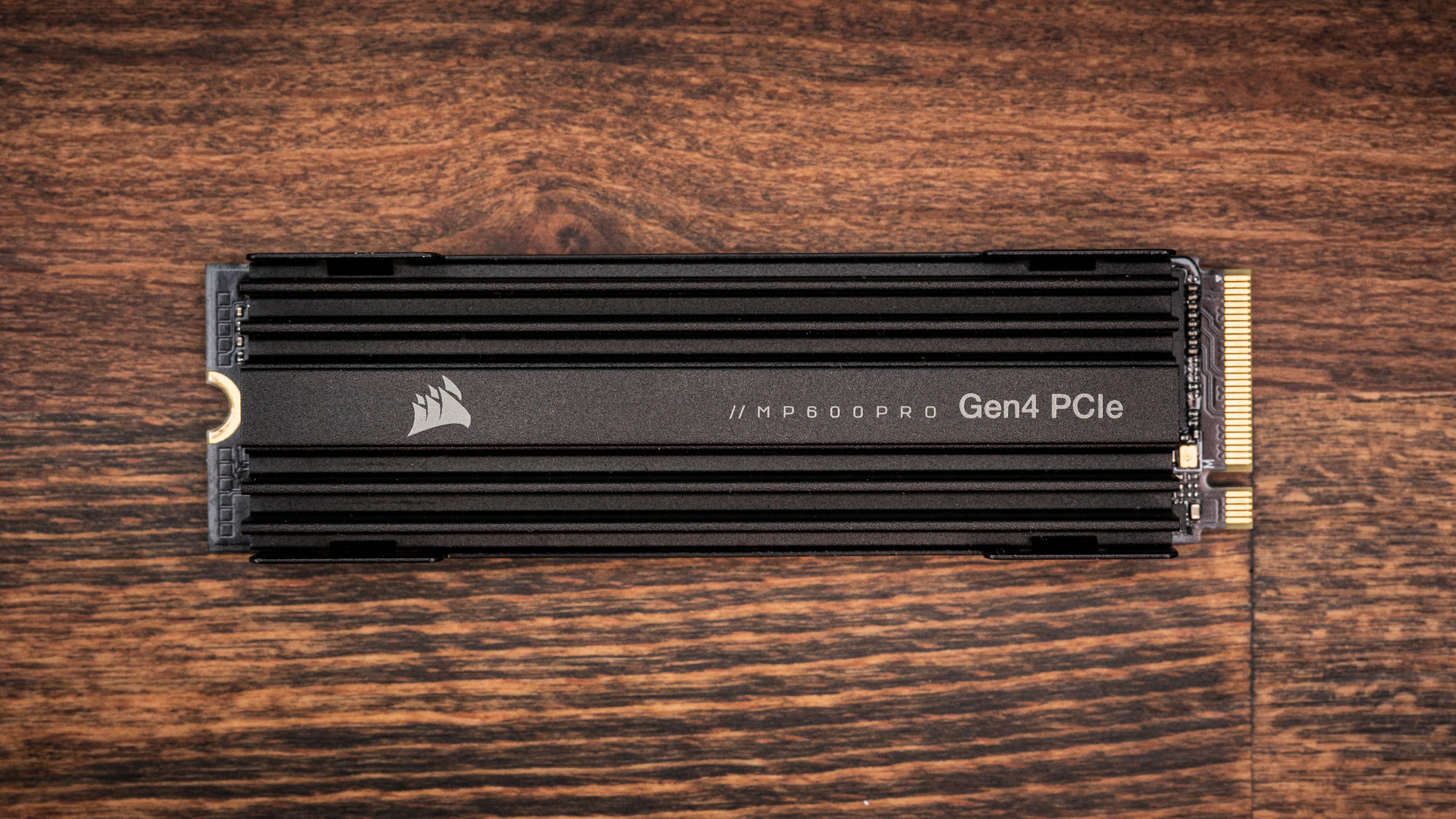

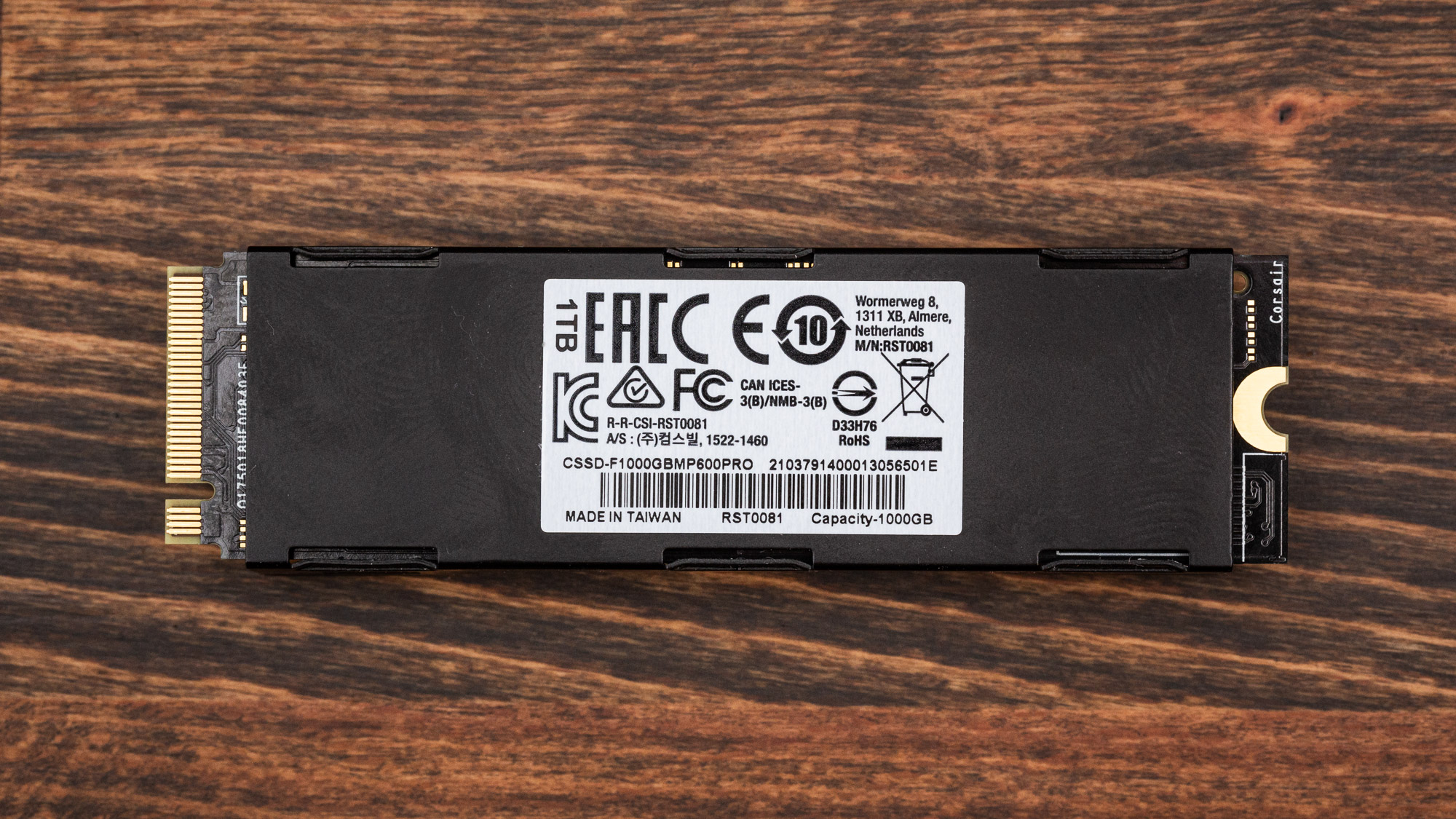
Corsair’s MP600 Pro is an M.2 2280 SSD, and our sample comes with a large extruded aluminum heatsink rather than the XM2 water block. The heatsink measures 24 x 14.5 x 70 mm and comes with plenty of fins to dissipate the SSD’s heat output, even in situations with little to no airflow. However, the fins are large enough that they could potentially block a GPU.
Unlike Adata’s XPG Gammix S70, you can remove the MP600 Pro from the heatsink, which is always a plus. But bear in mind, doing so may ruin the thermal pad between the heatsink and SSD, so you might have to do some patchwork or replace it with a new strip entirely if you plan to reinstall the heatsink later.
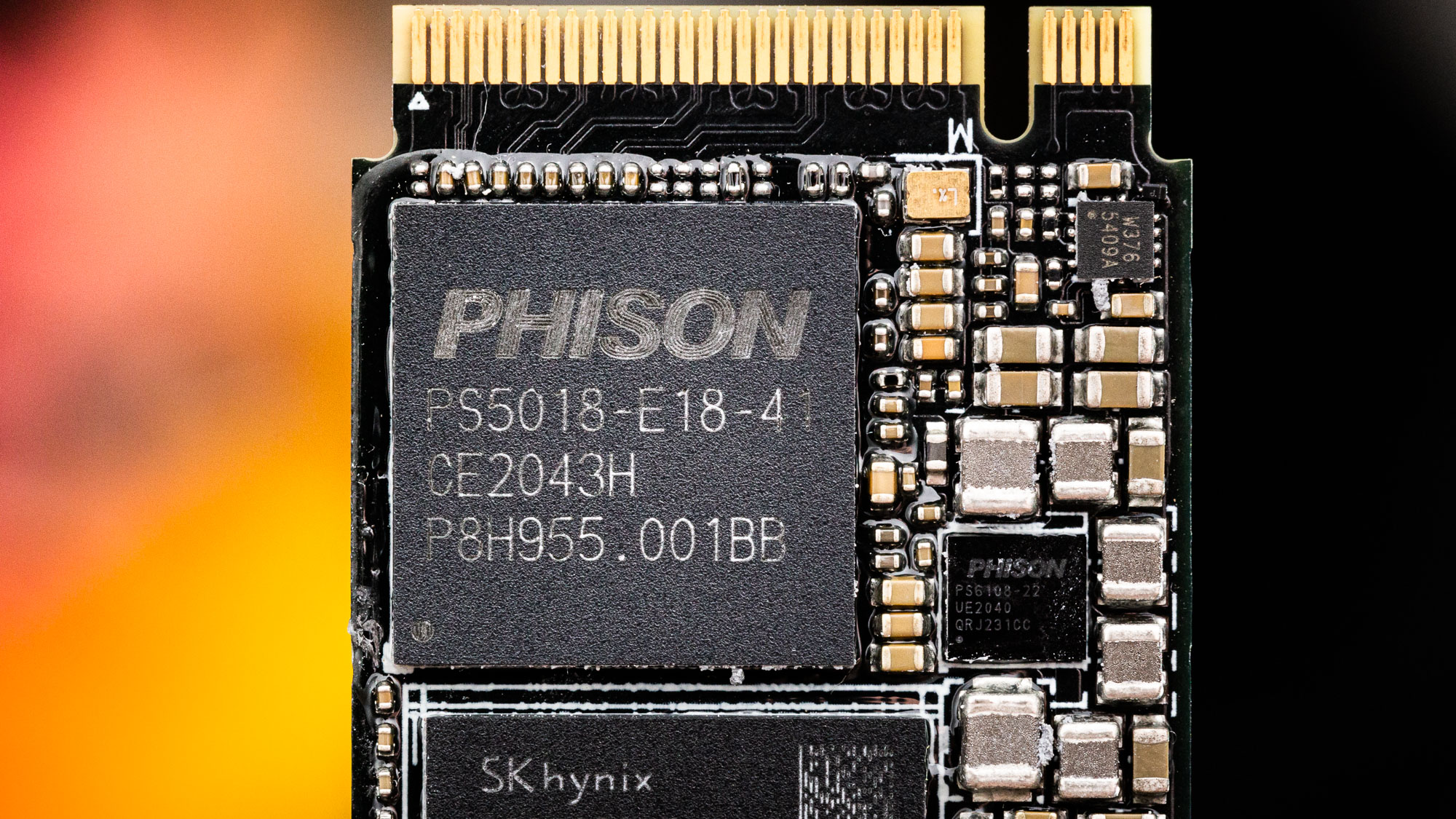
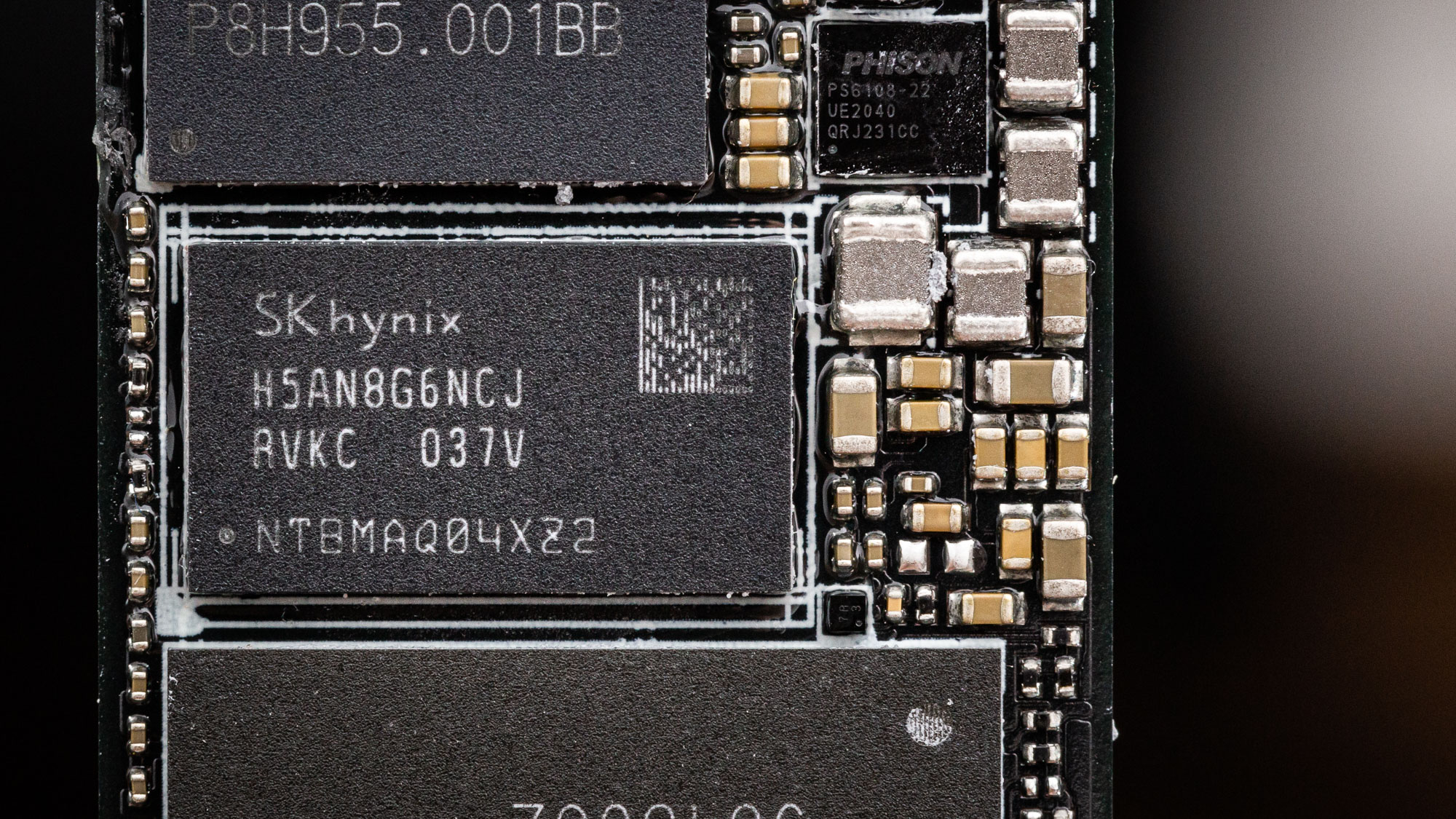
Phison’s PS5018-E18, a fast eight-channel PCIe Gen4 NVMe SSD controller, resides under the hood. This controller offers among the fastest write speeds we’ve seen, thanks to its DRAM cache that assures responsive access to the file mapping table. The controller also interfaces with a single 8Gb package of SK Hynix DDR4.
Furthermore, the controller incorporates three Cortex R5 cores clocked at 1GHz, and two lower-clocked Dual CoXProcessor 2.0 cores handle the host’s requests and the SSDs’ internal NAND management algorithms. The controller also supports APST, ASPM, and the L1.2 standby power state for efficiency, as well as thermal throttling to ensure cool operation. However, like the Sabrent Rocket 4 Plus, the MP600 also comes with a low throttle temperature limit. Thermal throttling triggers if the temperature exceeds 68 degrees Celsius. This algorithm dynamically reduces performance by roughly 50 MBps for every 1 degree Celsius over that limit.
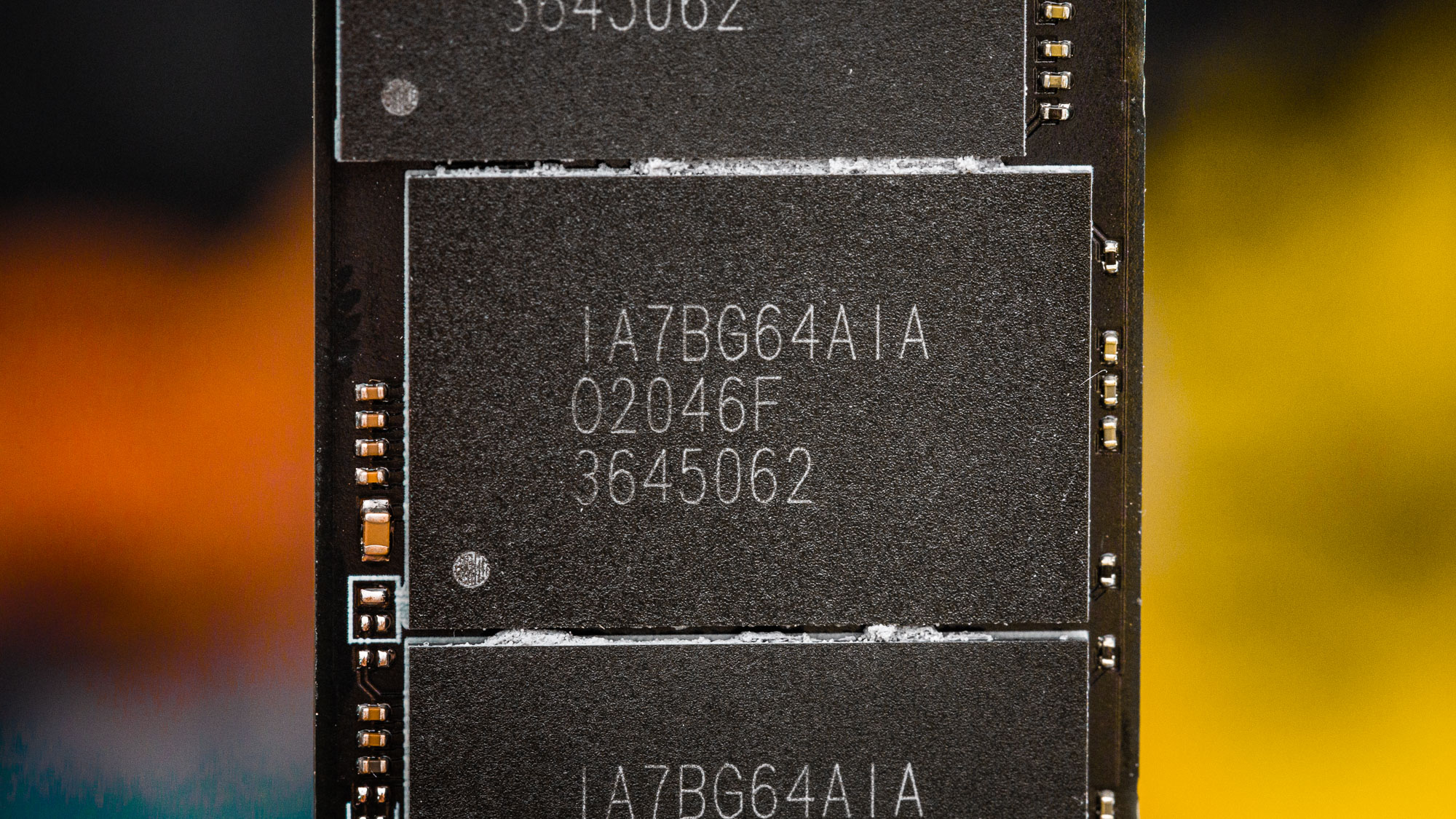
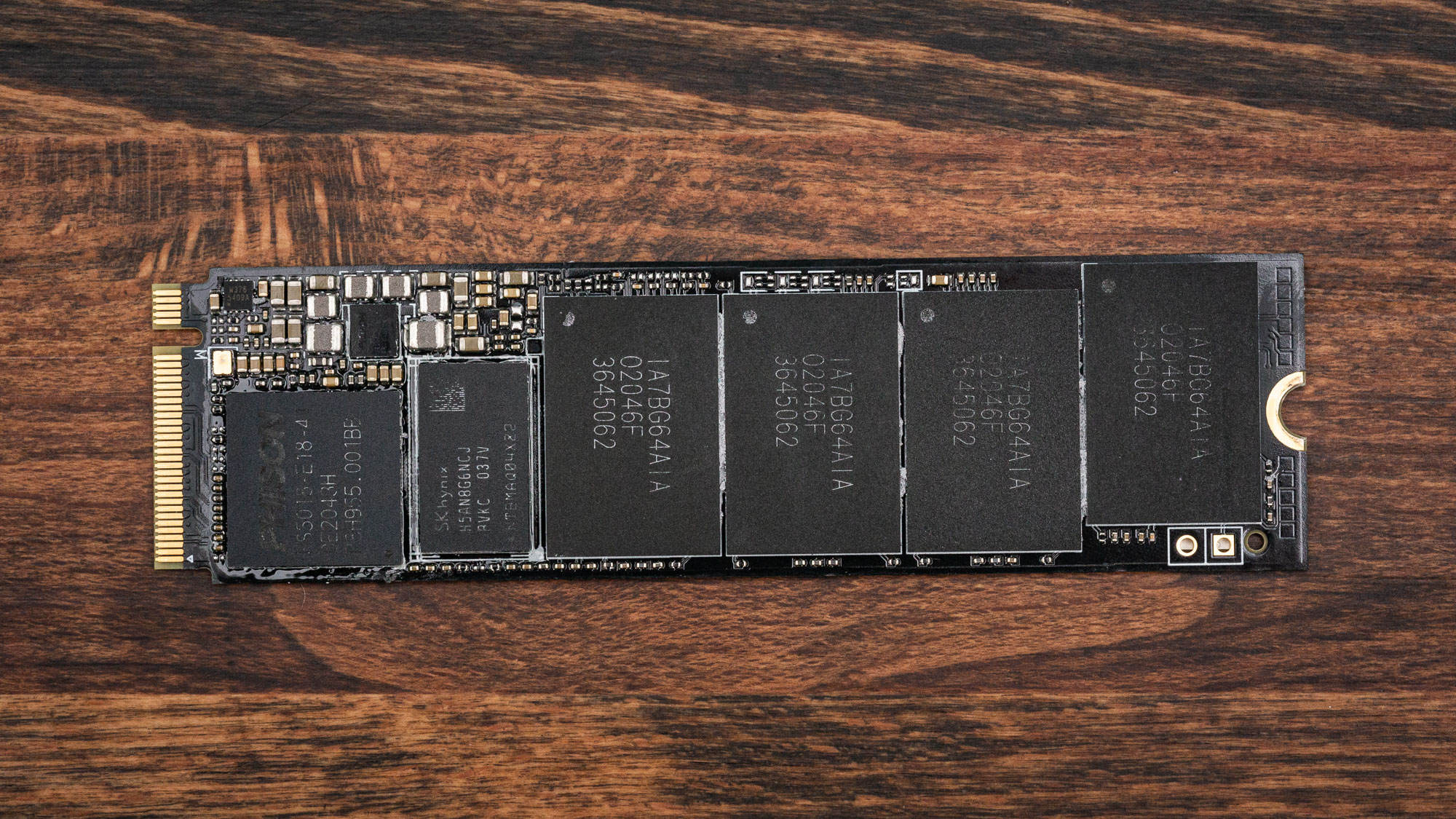
The MP600 Pro’s controller interfaces with Micron’s 96-Layer 3D TLC flash at speeds of up to 1,200 MTps. The 1TB model uses four NAND packages, each containing four 512Gb dies, while the 2TB models use eight NAND packages with eight 512Gb dies apiece. This flash features a robust quad-plane architecture and many innovative design features, including CuA (Circuit under Array) and tile grouping for responsive random read access. However, it isn’t as cutting-edge as Micron’s 176-Layer flash that should hit the market soon.
MORE: Best SSDs
MORE: How We Test HDDs And SSDs
MORE: All SSD Content

Sean is a Contributing Editor at Tom’s Hardware US, covering storage hardware.
-
Makaveli I have the original MP600 and there alot of changes on this new model I don't like.Reply
less endurance
less SLC cache
Why Corsair? -
Soaptrail A slight typo: the table lists the Hydro as $260 but the paragraph has it a tad more expensive:Reply
The MP600 Pro is available in capacities of 1TB and 2TB for $225 and $435, respectively. The Hydro X Edition only comes in a 2TB capacity with a slightly higher price tag of $460
-
salgado18 The WD SN850 and the Samsung 980 Pro both have 1,000,000 IOPS at the 1TB capacity, while the MP600 Pro has 380,000. Even the Sabrent Rocket has 750k IOPS. The MP600 has 680k. Why didn't it get mentioned? 380k is mainstream PCIe 3.0 performance, a WD Blue SN550 beats that at 410k. Yes, it has the transfer speeds, but 380k IOPS is way too low for 1TB. (if it's a typo, disregard this message)Reply